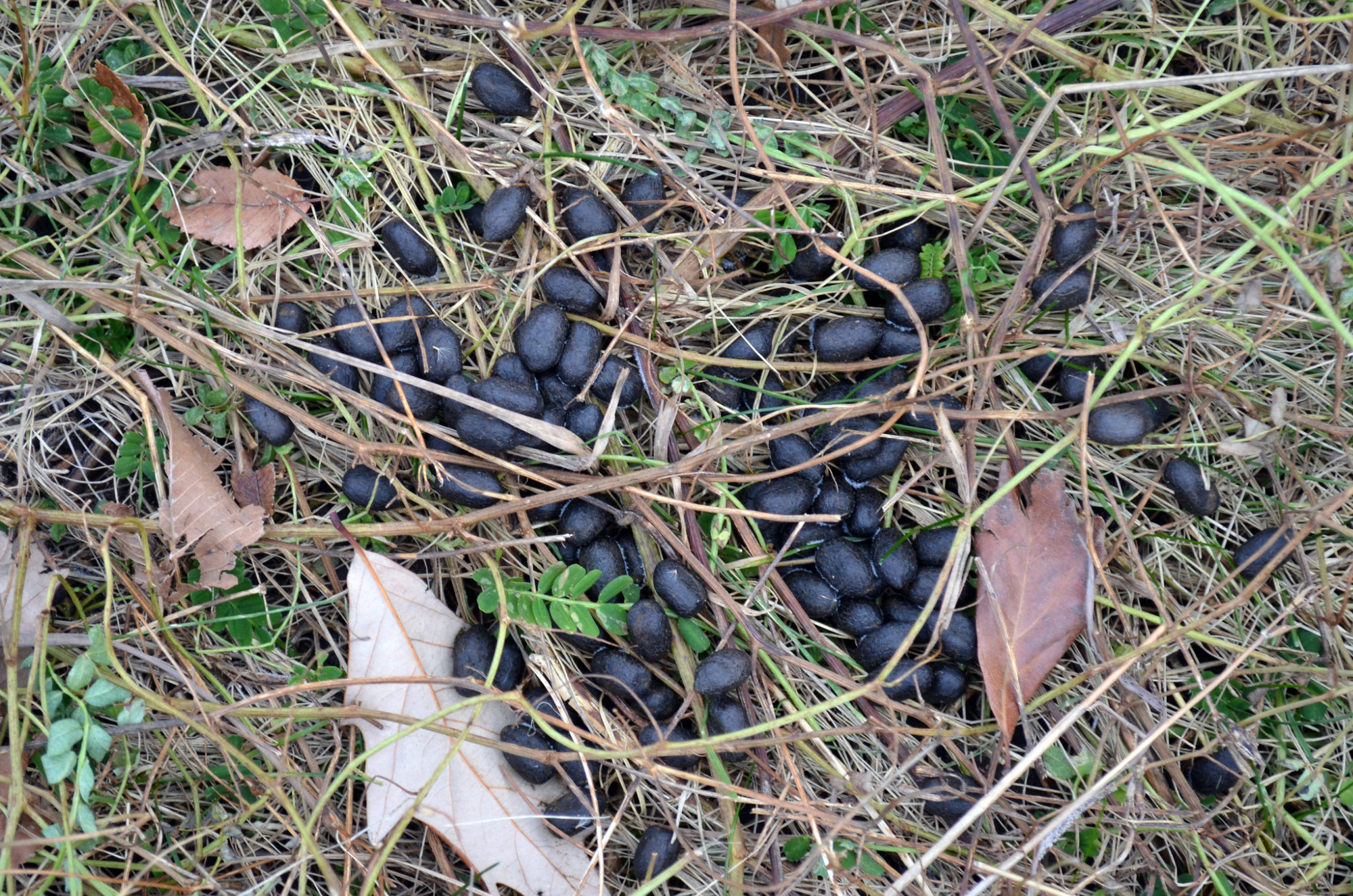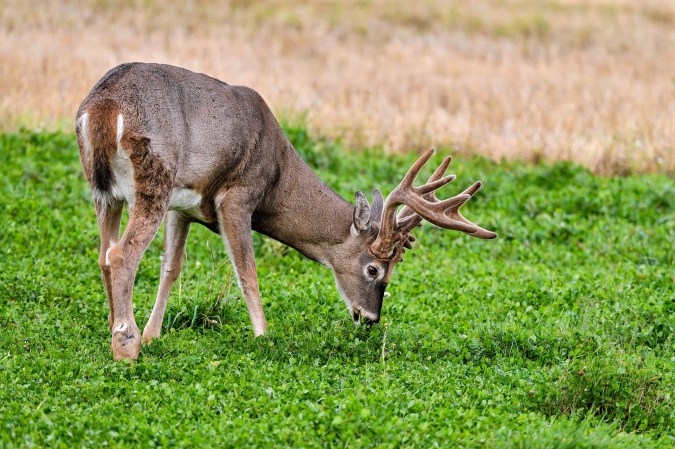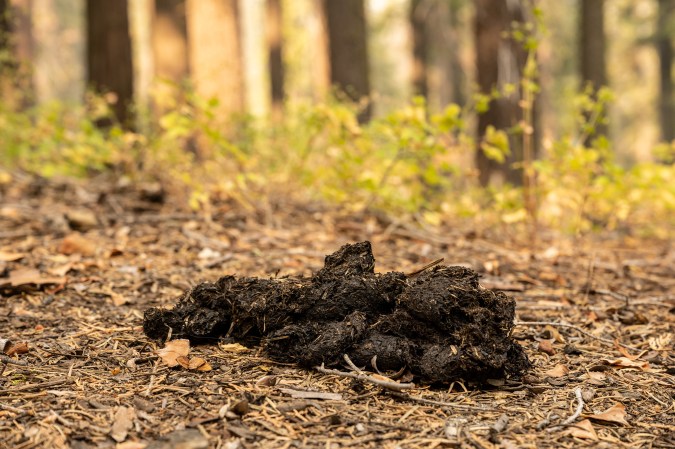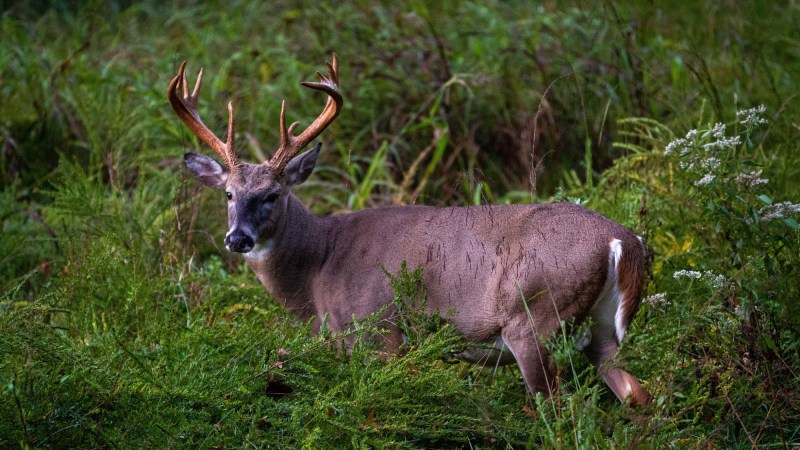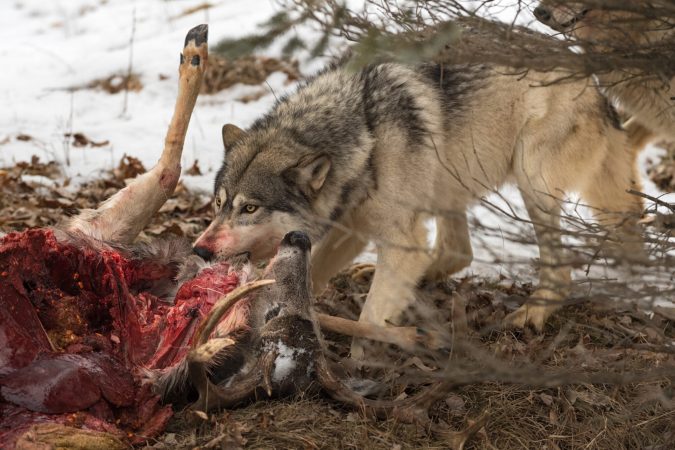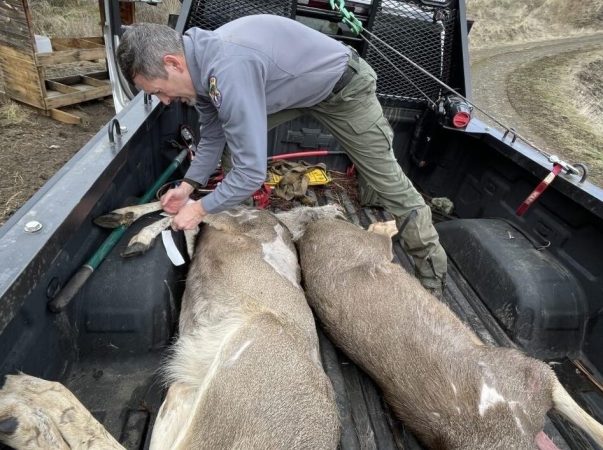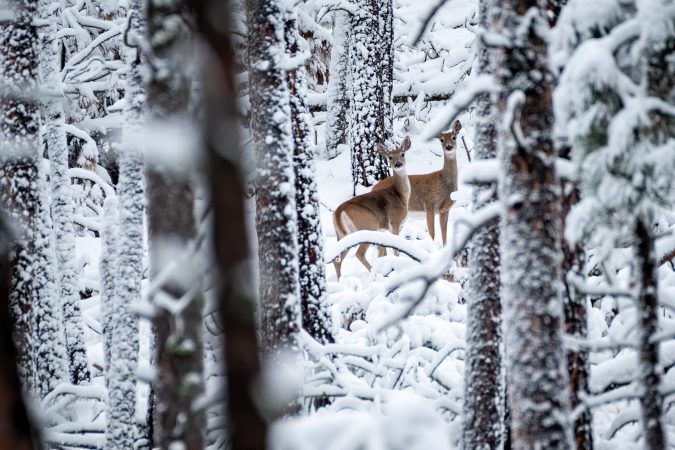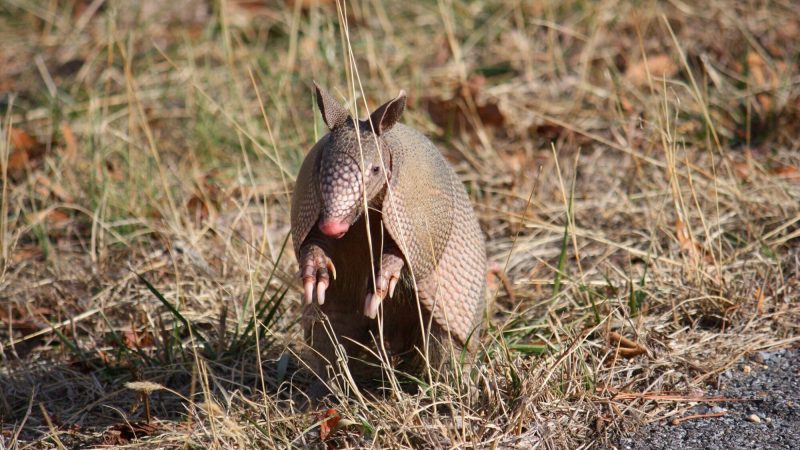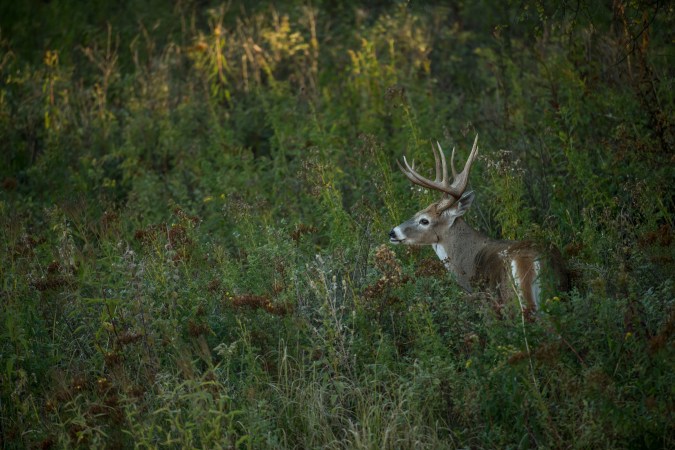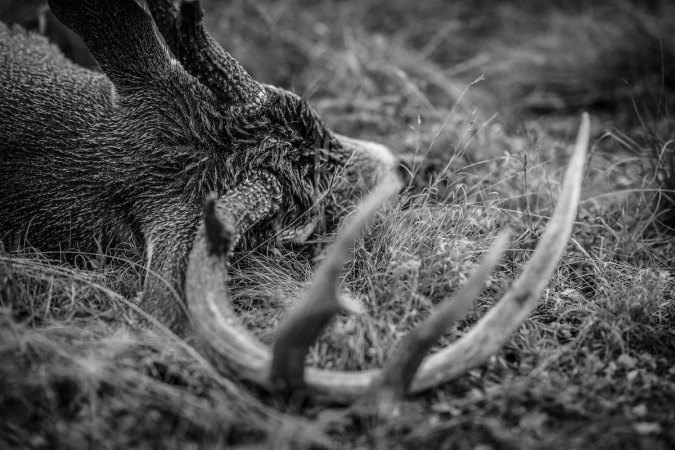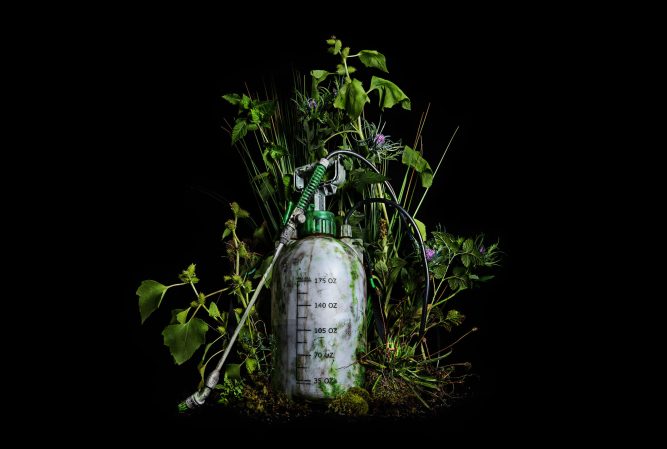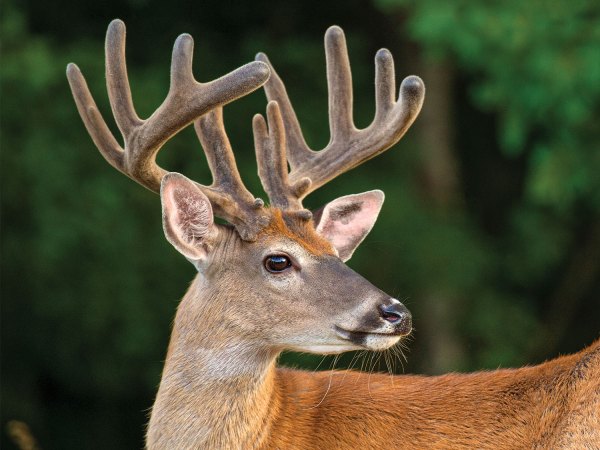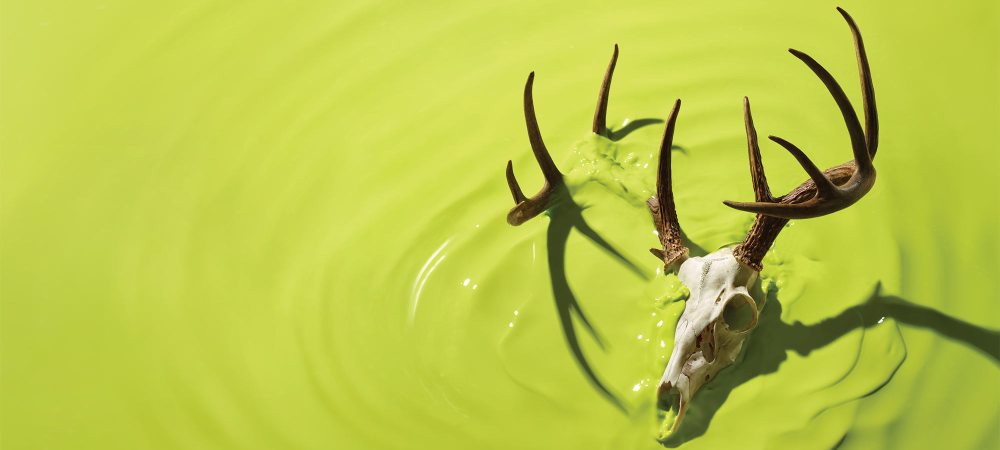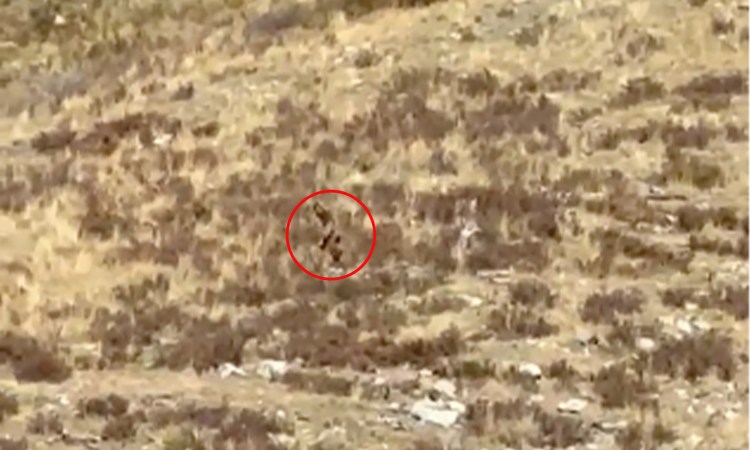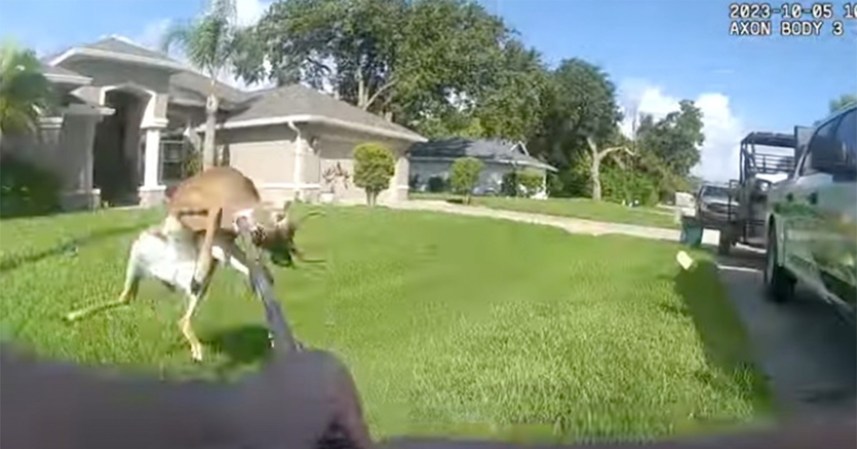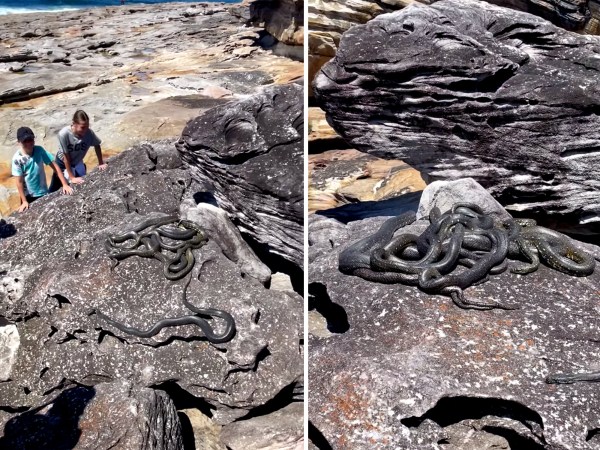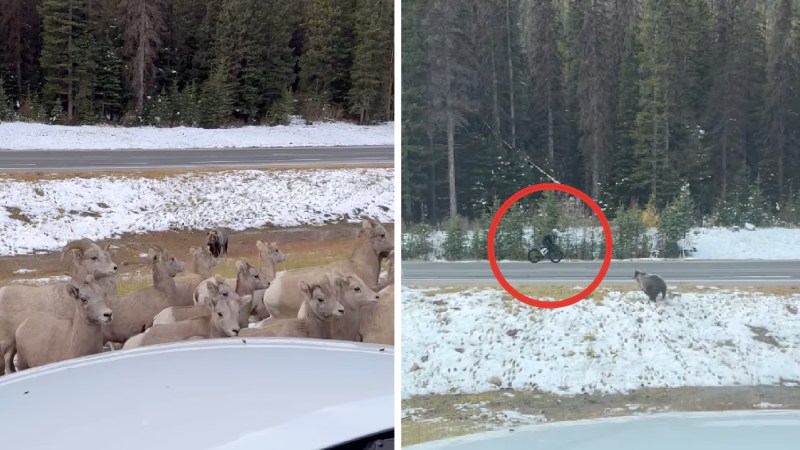If you live or recreate anywhere in the United States, odds are you’ve walked past (or stepped in) deer poop. Whether you spend time in city parks, the backcountry, or just your vegetable garden, there’s a good chance deer are eating and, yeah, crapping somewhere nearby. The presence of deer poop—which most often looks like a pile of dark brown pellets—can tell you where deer are feeding, bedding, and traveling. Similarly, the absence of deer poop is important: If you’re not seeing deer poop, odds are there are few, if any deer that use that area.
But a lot of animals produce piles of brown pellets. That’s the main obstacle to correctly identifying deer scat: it can look a lot like other animal scats. Once you have an understanding of how to tell deer poop from rabbit poop, young black bear poop, pronghorn poop, and other species’ scat, you’ll be able to pick it out of a field, garden, or city park with ease—and adapt your deer hunting tactics accordingly. To do so, you should arm yourself with knowledge of what different scats look like. Let’s dive in.
What Does Deer Poop Look Like: The Basics
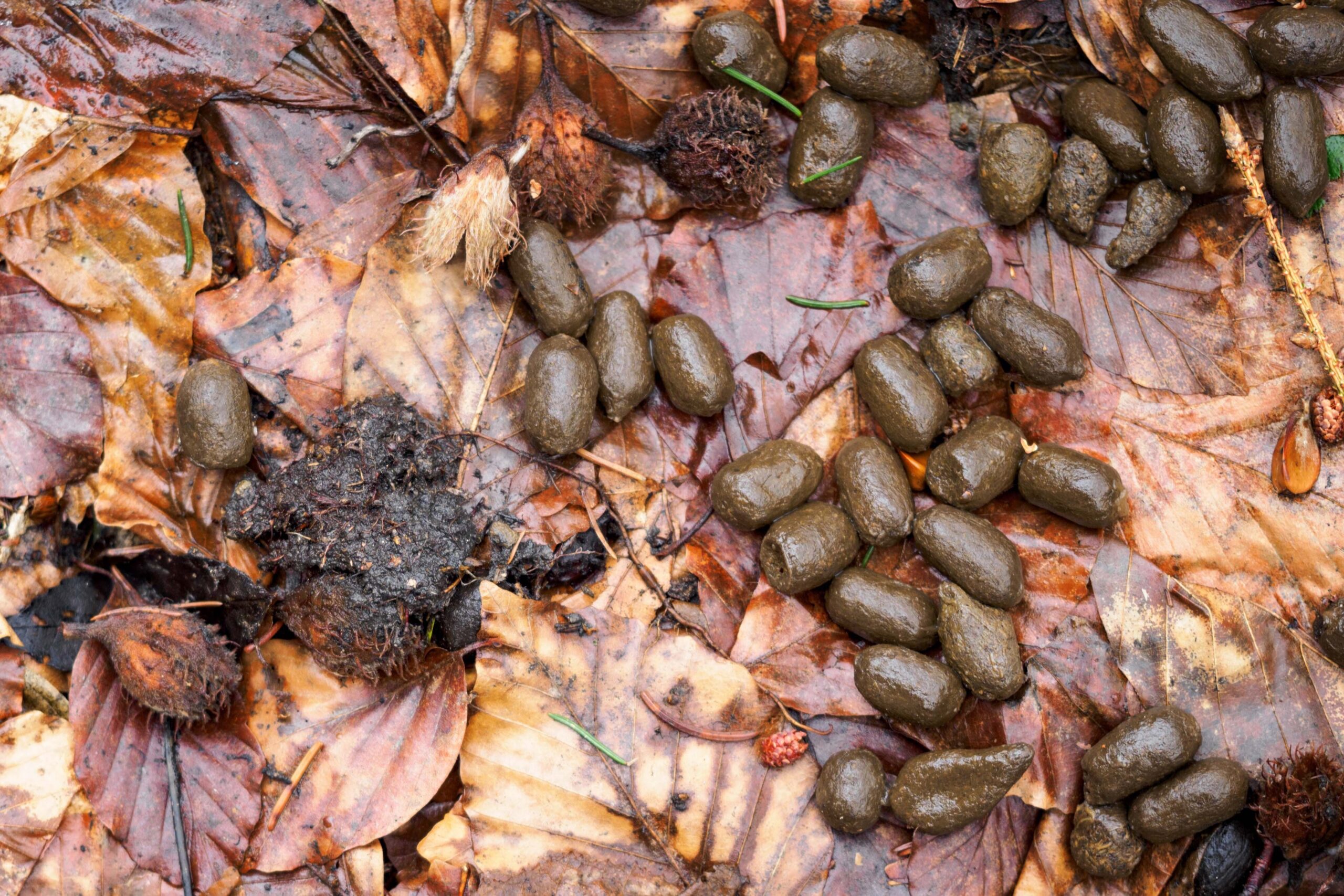
Deer create substantial piles of small, dark-brown pellets. Those piles can be as big as dinner plates or smaller, like a spilled bag of M&Ms.
Deer poop a lot. The NDA cites decades of research that shows during the spring and summer, adult deer poop 20 to 30 times a day. That frequency slows in the fall and winter to “just” 10 to 15 times a day. This is because deer are so focused on breeding in the fall that eating and digesting food takes a backseat. In the winter, food availability is limited, which means there’s simply less matter working through their digestive systems.
Throughout the year, there are a few main characteristics of deer poop that hunters and wildlife enthusiasts should know.
Main Characteristics of Deer Poop
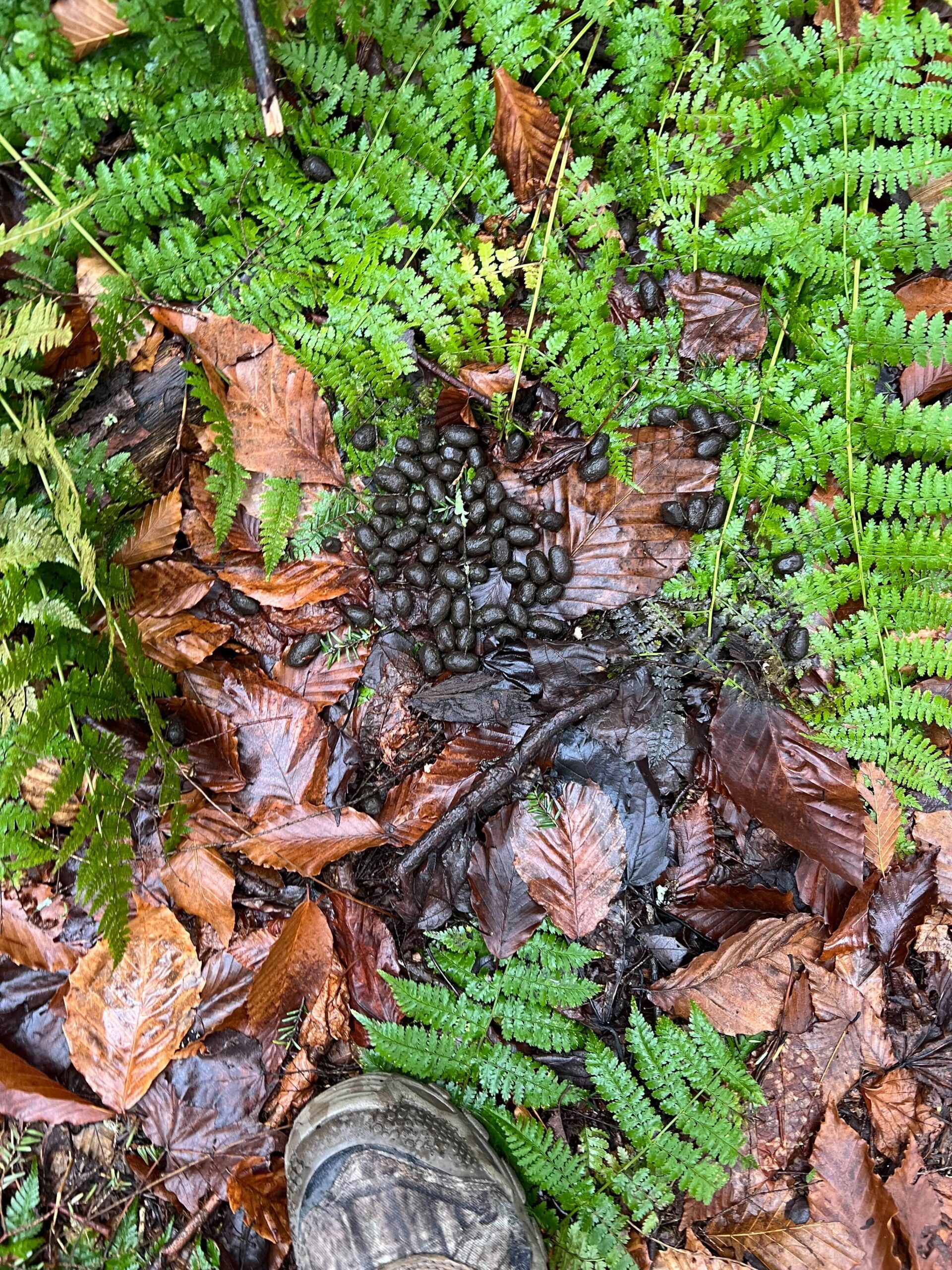
- Brown, oval-shaped pellets
- Individual pellets are .2 to .5 inches in length
- Shiny, wet appearance when fresh
- Some pellets might be tapered on end, while others might be perfectly round
- Deer poop ranges from moist to fibrous depending on water content of diet
- No visible food in pellets, which have a uniform appearance
- Moister scats might have clumps of pellets pressed together by the digestive system, while dryer scats will have that spilled-bag-of-chocolate-candies look
Deer Poop Look-Alikes
Whether you want to be a successful rifle hunter or you want to learn how to bowhunt deer, scat identification is essential for identifying places where deer spend time. Other critters leave behind similar droppings that can sometimes be confused with deer scat. This includes:
- Rabbit scat is usually a pile of round, brown pellets, while deer pellets are more oval. Depending on the species of rabbit, individual pellets can measure .5 inches or less in diameter
- Bear scat is usually a much bigger, less-formed pile. If it has a slightly tubular shape, the scat will measure between 1.5 and 2.5 inches wide and 5 to 12 inches long. Look for lots of food content in the scat, including fruit pits, nut shells, hair, human food, or trash
- Pronghorn scat is usually rounder but might also have a more irregular shape than a pile of deer pellets. They might look like chocolate chips, and tend to be around .2 inches in diameter
- Elk scat looks like a larger version of standard deer pellets. Look for uniform pellets that measure .4 to .5 inches in diameter
- Moose scat is even bigger than elk scat and really shouldn’t be confused with deer pellets. It’s less wet in the winter and presents as pellets, but after green-up it looks more like a miniature cow pie. Look for pellets that are .75 inches or bigger in diameter
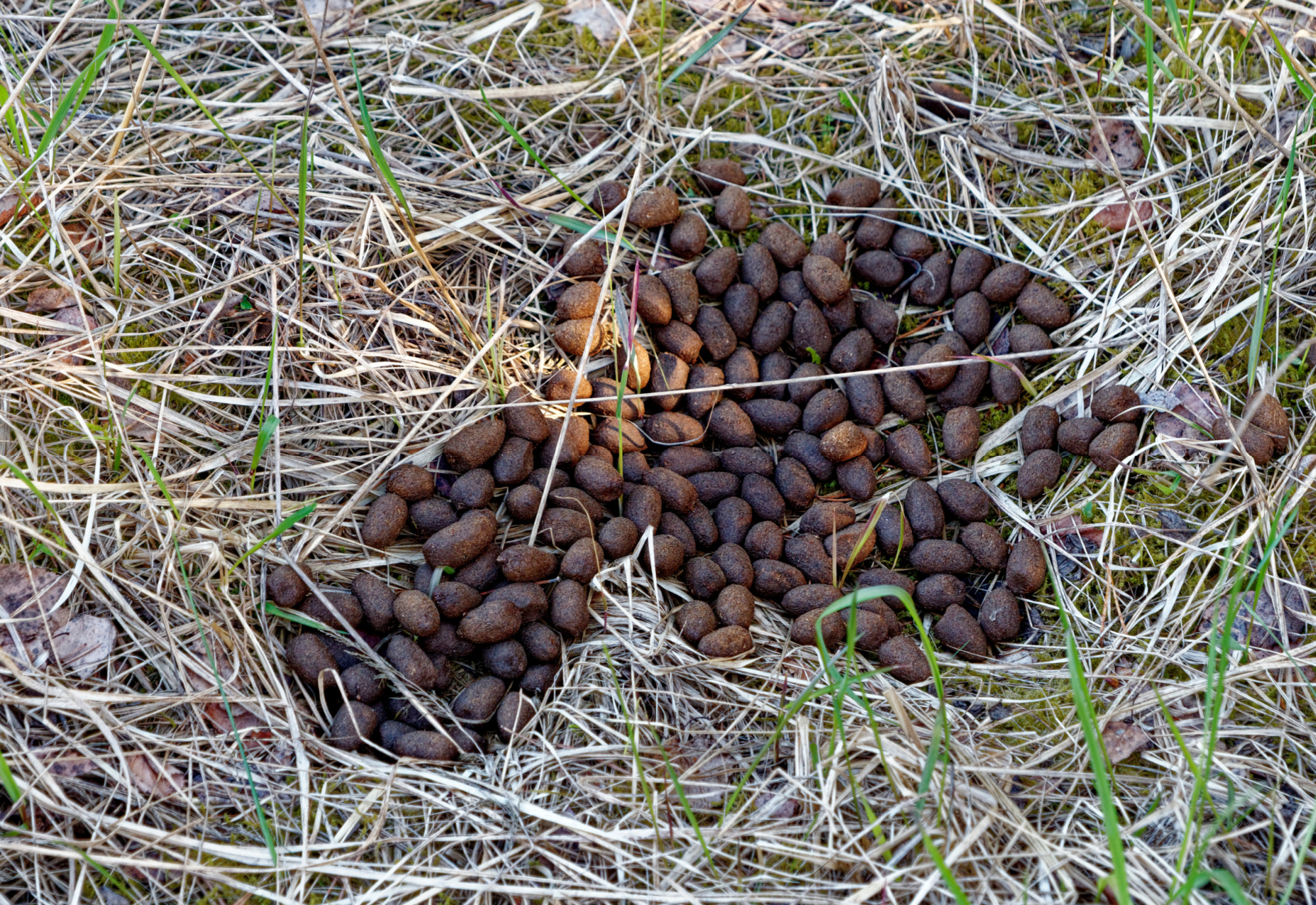
Comparing Different Kinds of Deer Poop
If you’ve ever felt certain that you could tell the species and sex of a deer just by its droppings, you might be mistaken. Let’s fact-check some of the most prevalent deer poop myths out there.
Buck vs. Doe Poop
Some game species reveal their sex through their droppings. Bull elk, for example, will sometimes leave behind large pellets with dimples on the ends, while cow elk pellets are more rounded. For years this conventional wisdom has been passed down among deer hunters, many of whom still believe that buck poop is bigger and more tubular, while the round pellet piles belong to does. This is a complete myth, NDA director of conservation Matt Ross tells Outdoor Life.
“There’s no discernible way to tell what produced that scat, male or female. There are theories, there are myths, but that’s just what they are. There’s no truth to them,” Ross says.
He does point out, though, that bigger animals tend to make bigger piles of pellets. Bucks leave behind an average of 70 to 80 pellets, while does leave an average of 50 to 60, according to the National Deer Association.
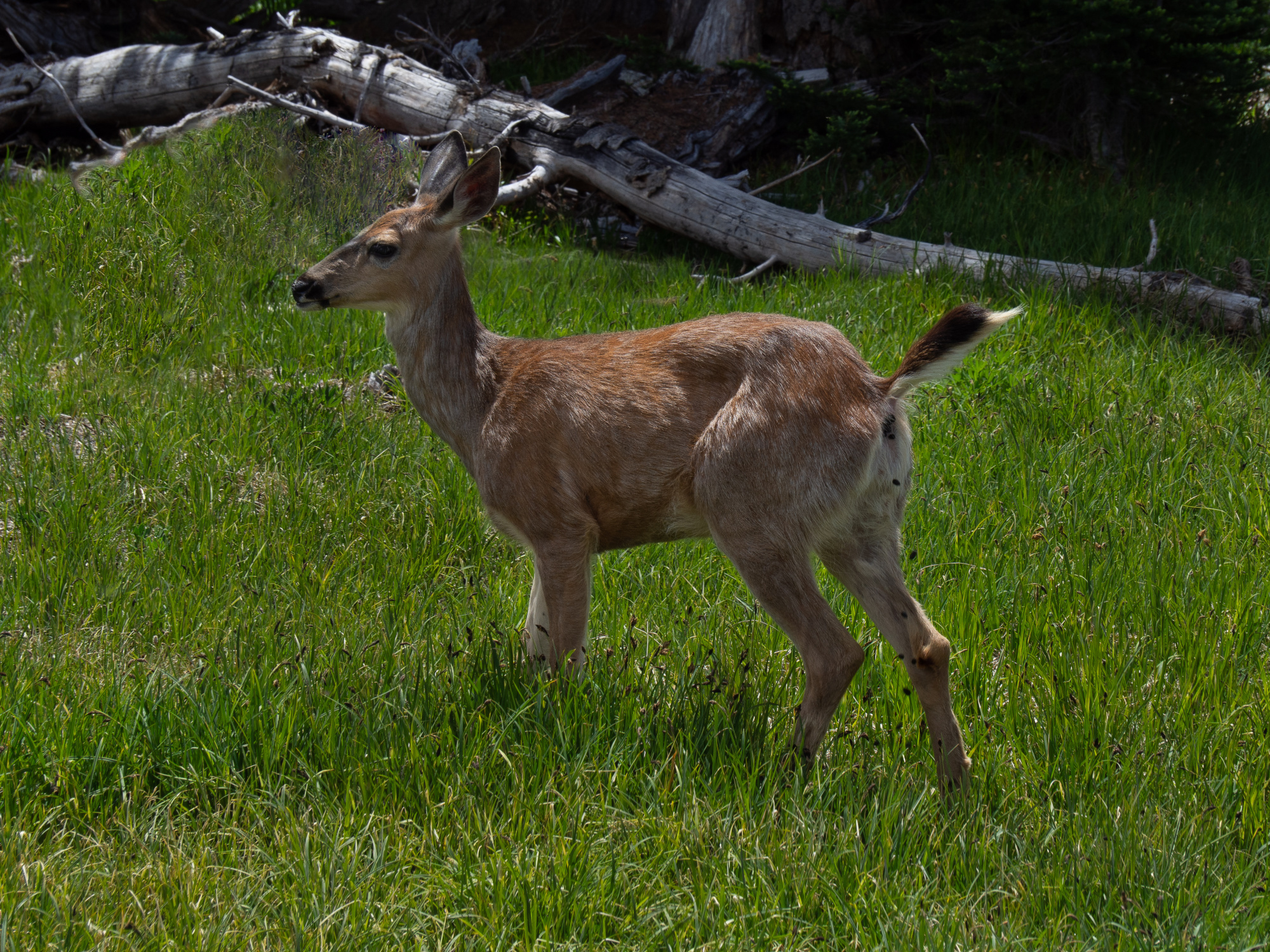
Since bucks are generally bigger than does, one could assume that a really huge pile of scat came from a mature buck. But there’s no way to tell (with the naked eye, at least) whether it was definitely a nice buck and not a huge doe. Unless you want to start counting deer pellets by hand, your best bet is to look for other clues—like buck rubs and deer tracks—that might help you distinguish between buck and doe sign.
Whitetail Poop vs. Mule Deer Poop
The primary difference between whitetail poop and mule deer poop is what it’s composed of. Beyond its contents, there’s no major physical difference between scats from mule deer vs. whitetail deer. Whitetails and mule deer rarely live in the same regions, although their range does overlap in parts of the West and Southwest. (It’s not uncommon to come across muleys and whitetails in the same day on the same hillside in those areas. If anything, whitetails are usually hanging out at lower elevation while mule deer climb higher.)
Because they live in largely distinct regions, a mule deer’s diet is also different from a whitetail’s diet. (Read up on what deer eat to get a better understanding.) While whitetails in the eastern U.S. feed on more lush, temperate-climate forbs and browse, mule deer in the West and Southwest are more adapted to a shrubbier diet. This means a standard mule deer scat from the Mountain West or the Southwest might have lower moisture content than a standard whitetail scat from, say, eastern Pennsylvania. But the climate is also drier, which means that scat dries out quicker in the West and Southwest than it would in a more humid environment.
In places where whitetails and mule deer range overlap, says Ross, it’s impossible to distinguish between their scat.
What Deer Poop Can Tell Us
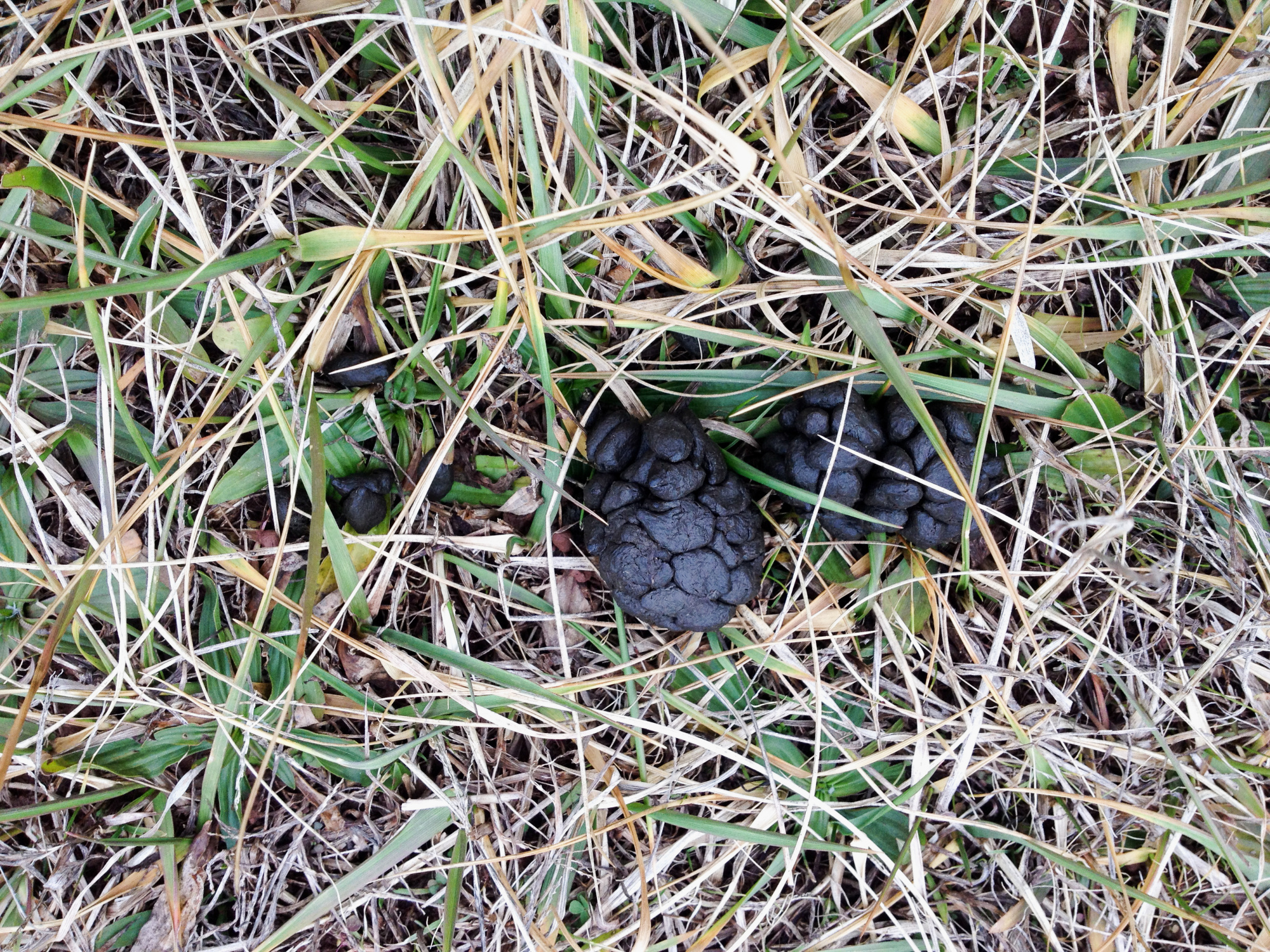
Scat comes in handy for hunters, photographers, researchers, and other wildlife enthusiasts by marking an area that deer frequently use. Deer usually poop right after they wake up, while they’re traveling through an area, while they’re eating, and before they’re about to bed down for the night, Ross explains. That’s why scat is one of the most valuable bits of sign for the committed deer hunter.
“Deer scat can be a really good scouting tool and predictor of deer use of an area,” Ross says. “Tracks and scat. A lot of people look for more physical evidence like pictures on a trail camera. But a preponderance of sign can be the ticket to actually getting a deer.”
Beyond what we can deduce with our own observations, deer poop also carries a lot of crucial information that biologists use to monitor herd health, hormones, and disease in deer populations.
“Scientists will look at diet, stress level hormones like cortisol, and there’s even research out there helping us track chronic wasting disease and finding prions in scat,” Ross says.
Scat came in handy when researchers in British Columbia wanted to better understand how mule deer were responding to recent megafires. Skeetchestn Indian Band wildlife biologist Shaun Freeman led a team and collaborated with the Toronto Zoo to discover that mule deer droppings were full of elevated cortisol levels following severe fire events in 2021. In other words, researchers could tell mule deer were extra stressed just by the hormone levels in their poop.
Deer Poop FAQ
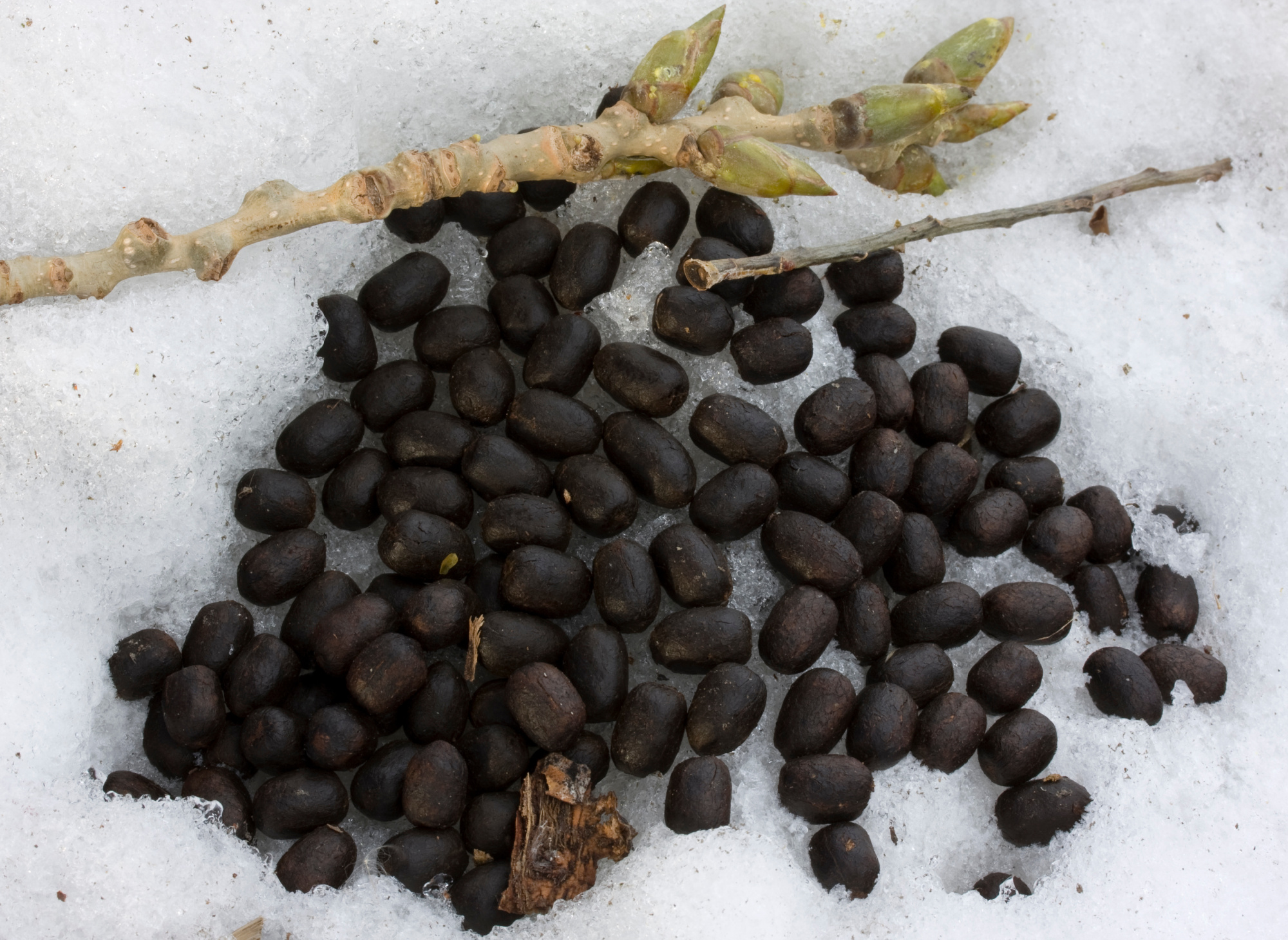
No, deer droppings are not something to worry about coming in contact with, Ross says. They are entirely made up of plant matter and will break down over time. While you usually don’t want fecal matter near your food or water, a few piles of deer droppings aren’t much of a risk to your backyard, your pets, or your gardens. If your yard is overrun with deer, you might want to fence off your vegetable garden to avoid any potential contamination.
Deer usually poop almost immediately after waking up, which means lots of droppings can be found near their bedding areas. They’ll also poop while feeding, so deer poop is often found near their food sources. Since deer poop so much throughout the day—anywhere from 10 to 30 times—you can expect to find a pile pretty much anywhere a deer might go.
Yes, small amounts of deer poop can be used to fertilize your garden by adding nitrogen to the soil. But the USDA recommends a period of 90 to 120 days between fertilizing with raw manure and harvesting any vegetables. This gives any bacteria in the manure a chance to break down before your veggies enter your kitchen.
Read Next: How to Identify Bear Scat
Final Thoughts on Deer Poop
If you’ve spent much time outdoors in the U.S., odds are you’ve come across a pile of deer poop. Deer are too ubiquitous from the far reaches of the backcountry to vast swaths of suburban development for most people to avoid their scat altogether. While you might not have known at the time where the scat came from, now you have the tools to identify it and differentiate it from other types of scat. A deer sighting probably isn’t too far behind.

